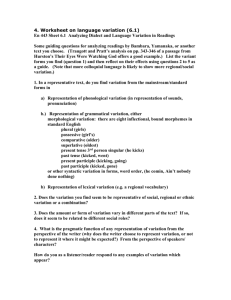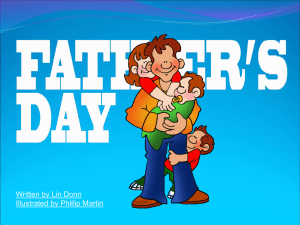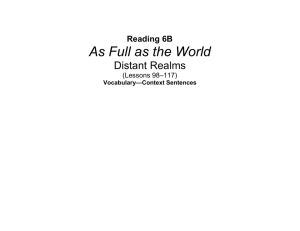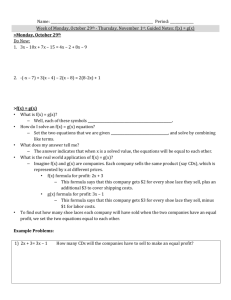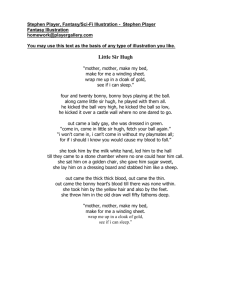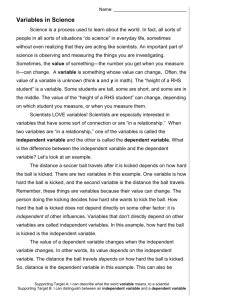Conference Notes: Back to Basics
advertisement
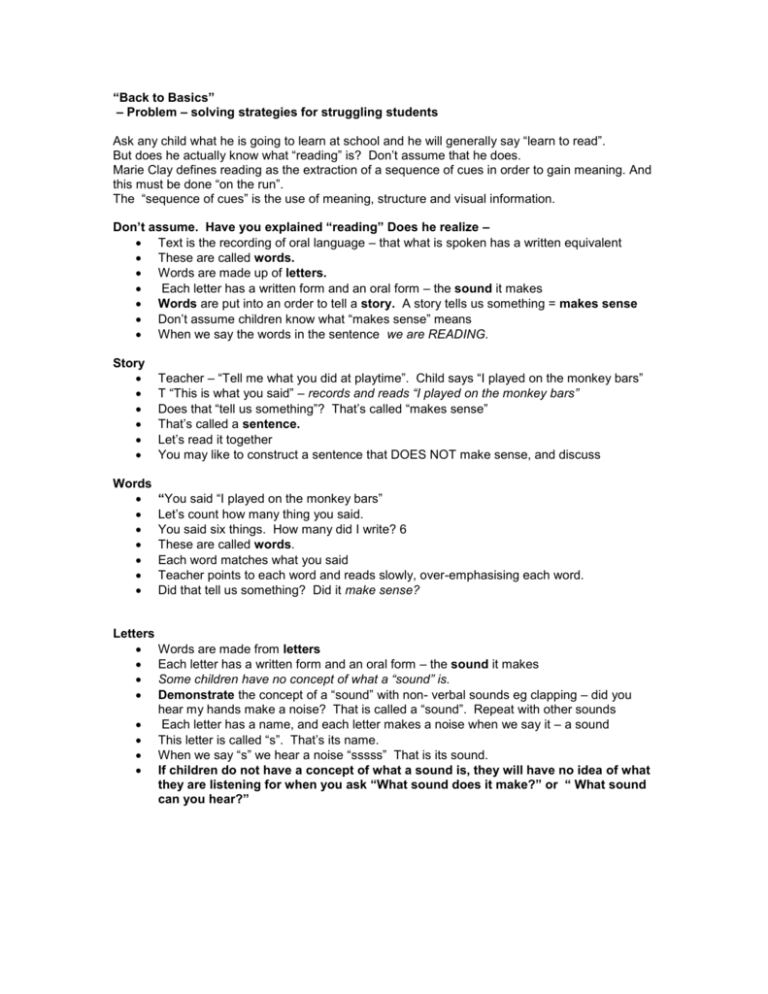
“Back to Basics” – Problem – solving strategies for struggling students Ask any child what he is going to learn at school and he will generally say “learn to read”. But does he actually know what “reading” is? Don’t assume that he does. Marie Clay defines reading as the extraction of a sequence of cues in order to gain meaning. And this must be done “on the run”. The “sequence of cues” is the use of meaning, structure and visual information. Don’t assume. Have you explained “reading” Does he realize – Text is the recording of oral language – that what is spoken has a written equivalent These are called words. Words are made up of letters. Each letter has a written form and an oral form – the sound it makes Words are put into an order to tell a story. A story tells us something = makes sense Don’t assume children know what “makes sense” means When we say the words in the sentence we are READING. Story Teacher – “Tell me what you did at playtime”. Child says “I played on the monkey bars” T “This is what you said” – records and reads “I played on the monkey bars” Does that “tell us something”? That’s called “makes sense” That’s called a sentence. Let’s read it together You may like to construct a sentence that DOES NOT make sense, and discuss Words “You said “I played on the monkey bars” Let’s count how many thing you said. You said six things. How many did I write? 6 These are called words. Each word matches what you said Teacher points to each word and reads slowly, over-emphasising each word. Did that tell us something? Did it make sense? Letters Words are made from letters Each letter has a written form and an oral form – the sound it makes Some children have no concept of what a “sound” is. Demonstrate the concept of a “sound” with non- verbal sounds eg clapping – did you hear my hands make a noise? That is called a “sound”. Repeat with other sounds Each letter has a name, and each letter makes a noise when we say it – a sound This letter is called “s”. That’s its name. When we say “s” we hear a noise “sssss” That is its sound. If children do not have a concept of what a sound is, they will have no idea of what they are listening for when you ask “What sound does it make?” or “ What sound can you hear?” Teaching strategies for solving unknown words - ie What do you do when you come to a word you don’t know? The common response from children is “Sound it out”. While this is useful for solving some words, it cannot be relied upon, as English, as has so many inconsistencies. Think of ‘’has” and “was”; “put” and “but”; “man” and “many”.How does a child know which words can be sounded out So, what strategies do you teach? There are four stages – monitoring, searching, self-correction and confirmation. 1. Monitoring Before you can teach problem-solving skills you must teach the children to monitor – notice they have made a mistake – What they read doesn’t make sense a mismatch – wrong word, not enough words, wrong letter – doesn’t look right doesn’t sound right. It’s not structurally correct -It’s not the way we say it in English 2. Searching looking for information to help solve the unknown word. The three sources are meaning, structure and visual information - M, S, and V Meaning (M)- this is the most important strategy. The best clue comes from context – the words and the picture Key questions Did that make sense? What could you try that would make sense? example Text reads “Dad kicked the ball up”. child reads “Dad kicked the “shoe” up T – “does that make sense?” (yes) Look in the picture - is dad kicking a shoe? (no) Structure (S) Key question Does that sound right? This is the most difficult strategy to teach – further notes on next page T Can we say “Dad kicked the shoe up?” Visual information (V) Key question What could you try that looks right? Early stage – Look at the first letter. Does “shoe” begin with “b”? Can you think of a word that does start with “b”? Later stage – point to the first letter. Does “shoe” begin with that letter? Can you think of a word that might fit - that makes sense, sounds right, looks right? Child says “:ball” 3. Confirmation Key question Were you right? How do you know? T – points to “b” Is that what you would expect “ball” to start with?. Does it look right? Does it sound right? Does it make sense? These three questions are crucial in every problem-solving situation T – “Read it again to check. Were you right? How do you know? 4. Self – correction Key question - Can the child solve his own problem? This, of course, is the vital strategy that we are teaching all our children to master Can the child recognize an error and correct it unaided, using all cue sources (MSV) and on the run, in order to gain meaning – which is how Marie Clay defines reading Teaching for structure This is the most difficult strategy to teach. If the child does not have control over the correct structures of English in his oral language, he will most likely have difficulty in reading and writing these correctly. He simply doesn’t know that his reading “doesn’t sound right” “Tom look and look for the ball” may sound perfectly acceptable, as it still makes sense. Simply adding the common past tense ending “-ed” to words such as “run” and “wake” is a common error than is often not corrected, because the reader doesn’t recognise it is wrong. Correct structures have to be specifically taught. The common endings of “s”, “ing” and “ed” are introduced from Red 2 onwards. “s” – this is what he does - looks, kicks, shouts This may be difficult for some readers as we don’t often use present tense verbs in conversation, eg “Pussy sees the birds” “the birds look down at Pussy” “ing” – this is what he is doing - looking,kicking,shouting “ed - this is what he did – looked, kicked, shouted (mispronunciations such as “lookdid” are usually eliminated with time and practice) The pronouns “he” and “she” are interchangeable in some languages, there being one word for both, the meaning and context indication which it is. We must teach the children the language and structure of books. We must teach them the unusual structures found in some books. Consider the following examples “Where are the Sunhats?” with “The hats!” said Mum, and “Home we go” “Brave Father Mouse “ – “Look! Bread!” How often do we say simply “Look!” ? “Magpie’s Baking Day” – “Not I” said the mouse , which is grammatically correct but in conversation we are more likely to say “Not me” Irregular past tense verbs are often corrected with time, but in the early stages it may be simply a matter of explaining “We don’t say “waked”. We say “woke” Difficulties with structure become more evident at Orange level and above, as the structures become more abstract, such as “as fast as”; “would have” and “faster than”. As the reader’s command of English improves, so too will his control over structure. All children arrive at school with at least 5 years of oral language learning in place. The quality depends on their involvement with being talked to and talked with.. At school the child must apply his oral language to the reading situation. For the ESOL child, not only is he learning English, but learning in English plus learning to interpret the symbols on the page – ie read. They deserve our heartfelt congratulations. Sue Leman NZLA Conference Auckland July 2013 Lifting Literacy Levels 1. Selection of text 2. introducing the new book 3. follow-up activities Selection of text Why have you chosen that text? What skill are you using that book to reinforce? Suitability for your children – relating it to their own experience Is it simply the next book in the box?, the only one with 6 copies? Check the suggested order of difficulty for the PM’s Introducing the text Set the scene – look through and talk about the pictures Introduce key vocab, new or unfamiliar words, unusual structures, eg “Brave Father Moiuse “ – with “Look! Bread!” Take nothing for granted – don’t assume the reader understands eg “Seagull’s Breakfast” – do they know what “shellfish” are and why they are difficult to open? Follow-up activities is the worksheet suitable/appropriate for this group? Does it reinforce the targeted strategy? Commercially –produced activities – are they simply a matching activity or teaching a skill? Are your task board activities teaching skills or merely time fillers? Skill progression Does today’s new book link with yesterday’s book? Will tomorrow’s new book link in with today’s book? Is the new book reinforcing the same targeted skill? Key vocab? A logical sequence would be – Red 1 – Day 1 – “Wake up Dad” - wake up, I am up Day 2 – “The Lazy Pig” – Wake up. I am up. Come to… Day 3 - “Tiger. Tiger” - is up, wakes up, Come up Setting a target How are you determining readiness to move to the next level? Are you moving them quickly enough? If they are not making progress there are two factors to consider – 1. Is it the child’s fault – language/attendance/ special needs. If so what are you doing to address these issues? 2. Is it your fault? How can you change your teaching to ensure they do achieve? Before you can teach children to read, you must create in them the desire to want to learn to read Good luck! Sue Leman NZLA Conference Auckland July 2013
